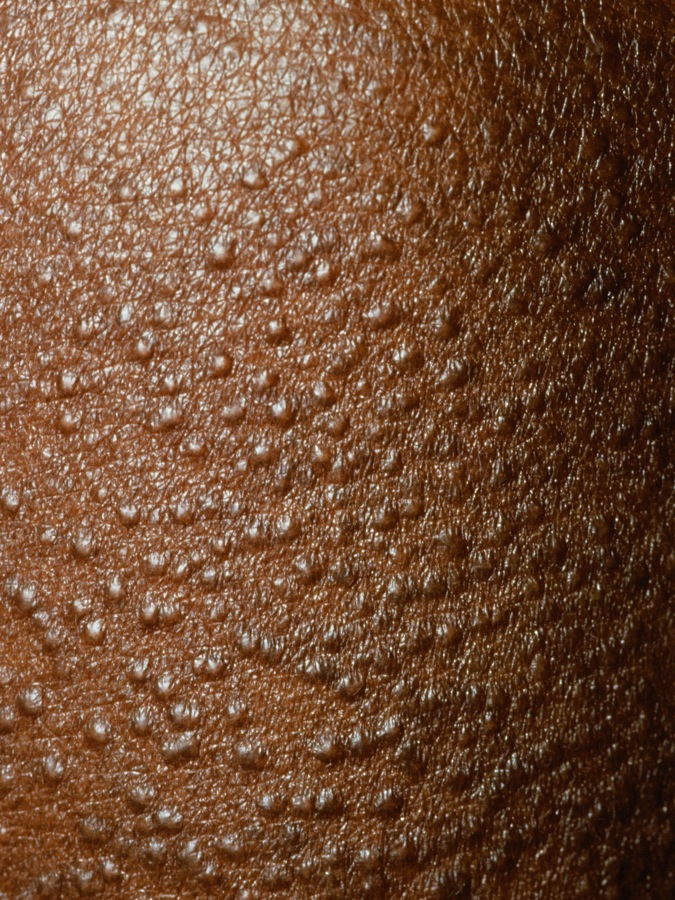
Lichen Myxedematosus
Cutaneous mucin deposition may occur in association with a paraprotein usually of the IgG-lamba type. When multiple papules occur, the term lichen myxedematosus is used (also papular mucinosis). When confluent with underlying induration, the term scleromyxedema is used. Diffuse deposition of mucin may occur internally although life expectancy is usually not affected. Gastrointestinal involvement is most common, manifested by e.g. dysphagia. Other systemic manifestations include dyspnea on exertion, hypogonadism, hypothyroidism, diabetes mellitus and proximal muscle weakness.
Hematologic malignancies commonly develop including acute leukemia, non-Hodgkin's lymphoma and multiple myeloma.
Also note that the association between focal cutaneous mucinosis and internal malignancies such as gastric, pancreatic, lung, and ovarian neoplasms has been reported in the past, but that the exact certainty of this association is unclear.
Innumerable uniform 2-3 mm skin-colored papules along the arms, neck and face occur in lichen myxedematosus. A variable amount of erythema or a dusky violaceous color may be seen. Deep furrowing on the back, the so called "Shar Pei sign" may be seen. Oval "donuts" may be present over the PIP joints of the hands.
Scleromyxedema is strongly associated with a monoclonal gammopathy, which is generally mild and, in almost 80% of cases, related to λ IgG. However, the clinical implications are unclear. Scleromyxedema also is accompanied by systemic features, most commonly dysphagia, myalgias, and arthralgias, which distinguishes it from other cutaneous mucinoses. Notable morbidity and mortality are associated with involvement of the central nervous system, which can manifest as encephalopathy, seizures, or coma. Mucin deposition may be found in the myocardium and the coronary and pulmonary vasculature, resulting in rare cases of cardiac and pulmonary disease.
Occasionally, there is no gammopathy, in which case, SPEPs should be done routinely as it may appear later in the course of the disease.
Homepage | Who is Dr. White? | Privacy Policy | FAQs | Use of Images | Contact Dr. White